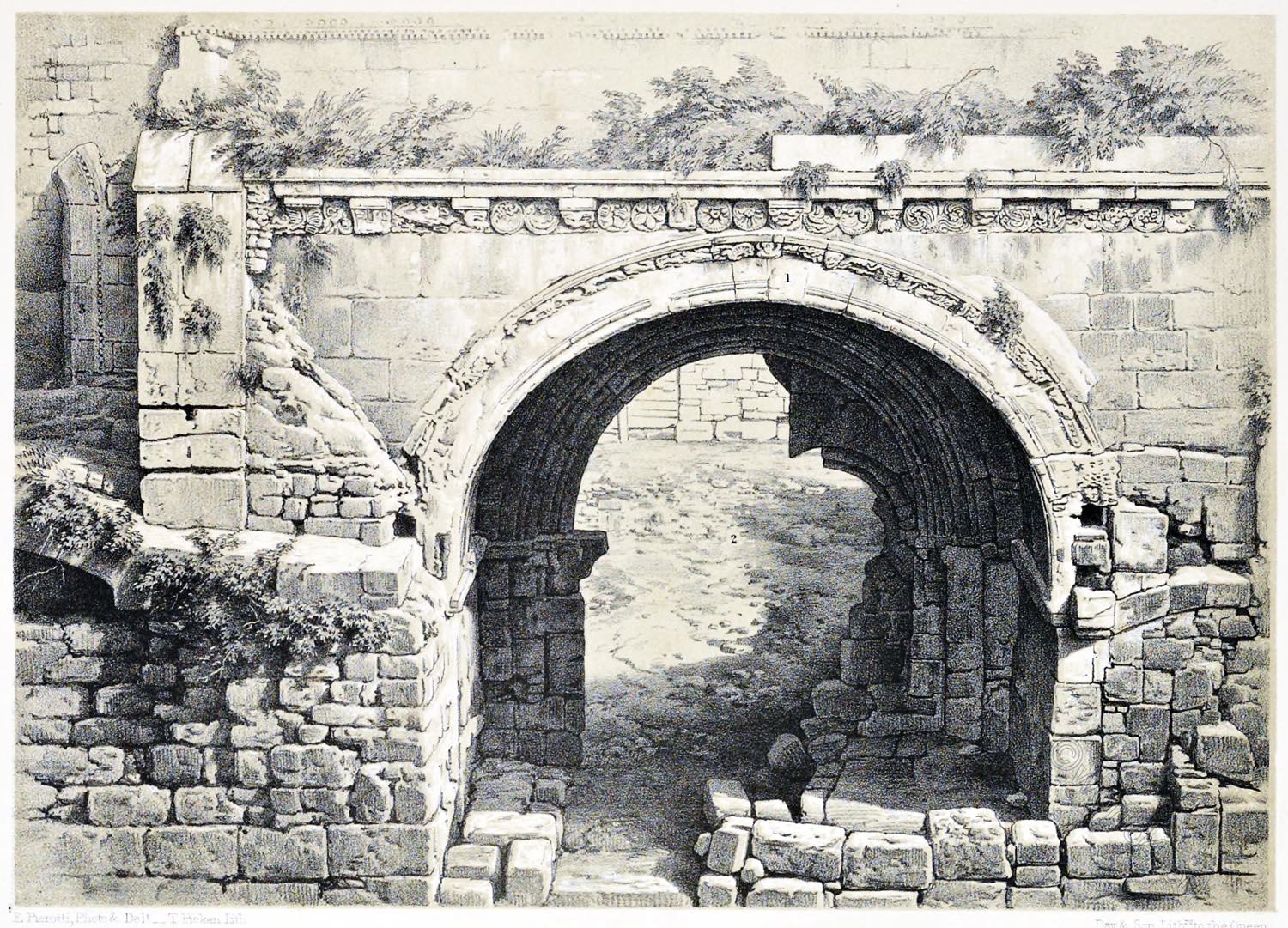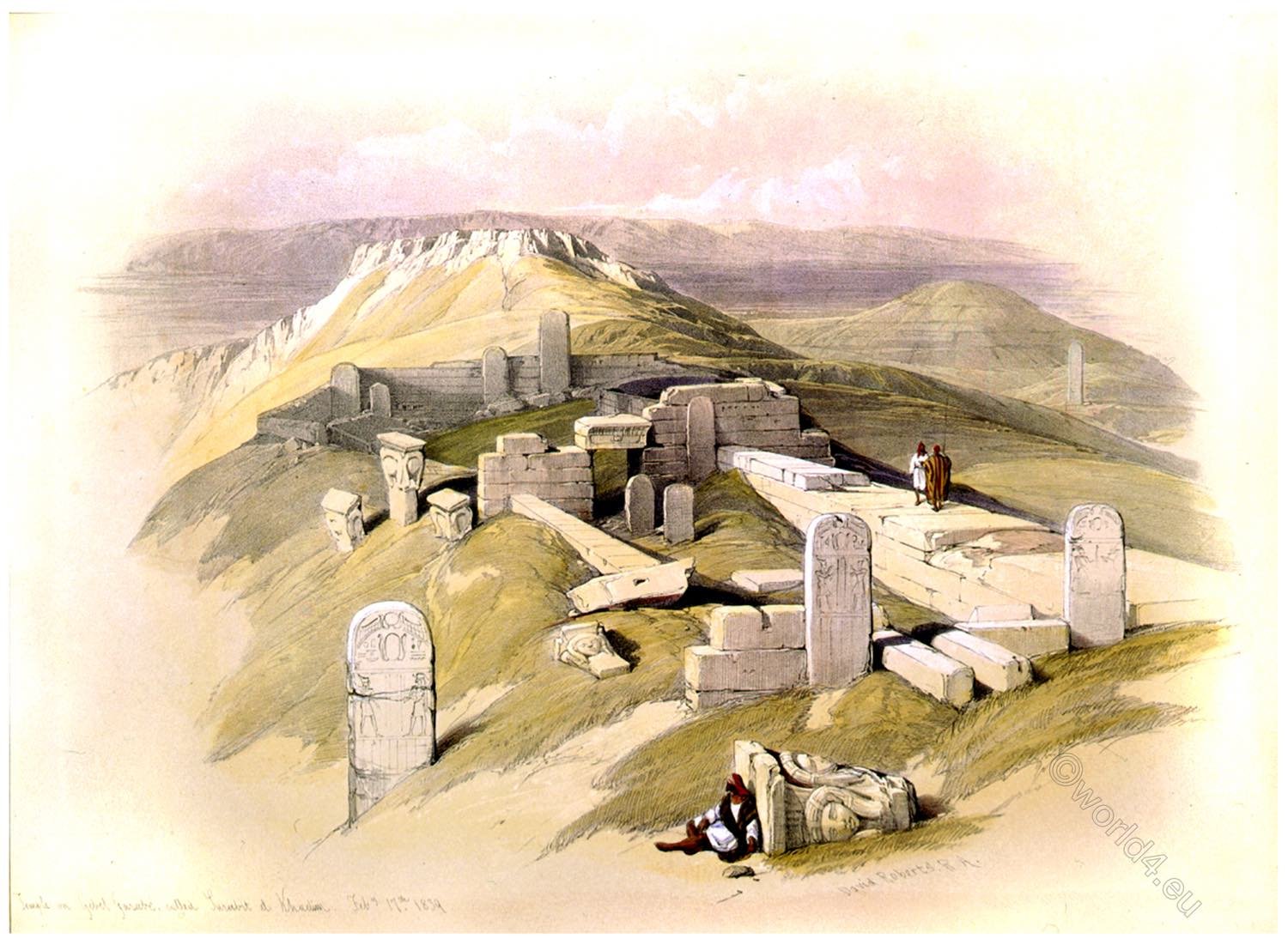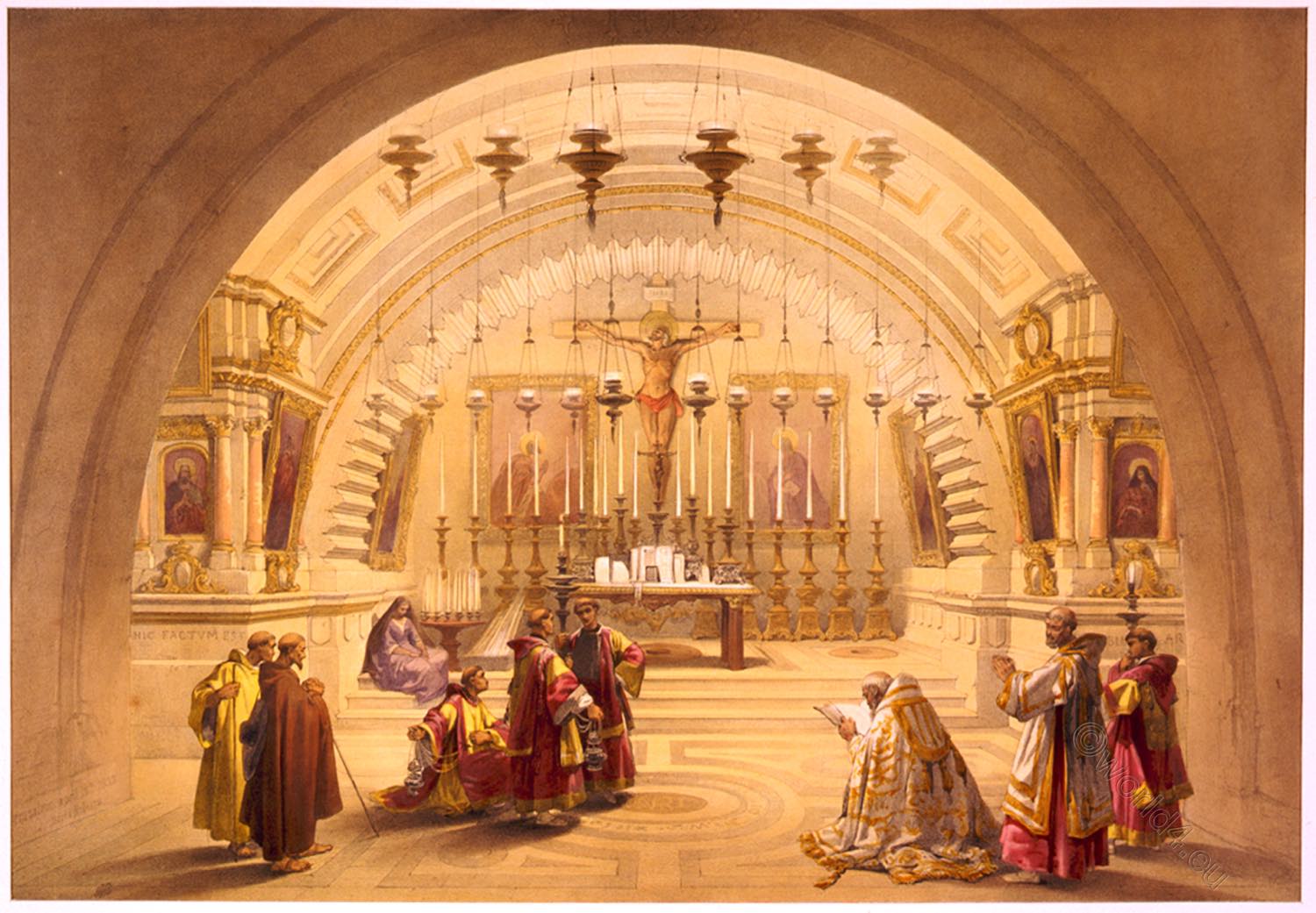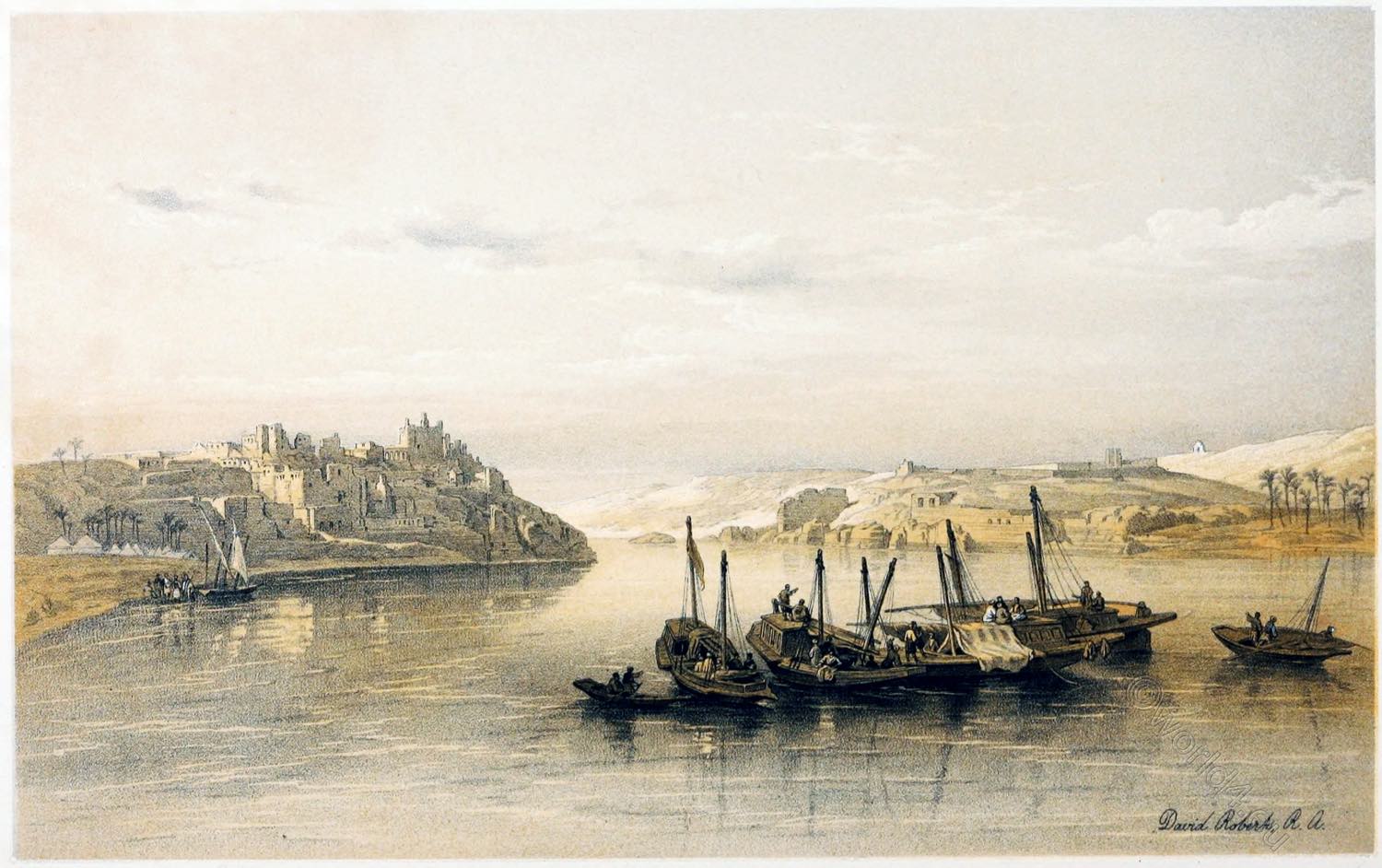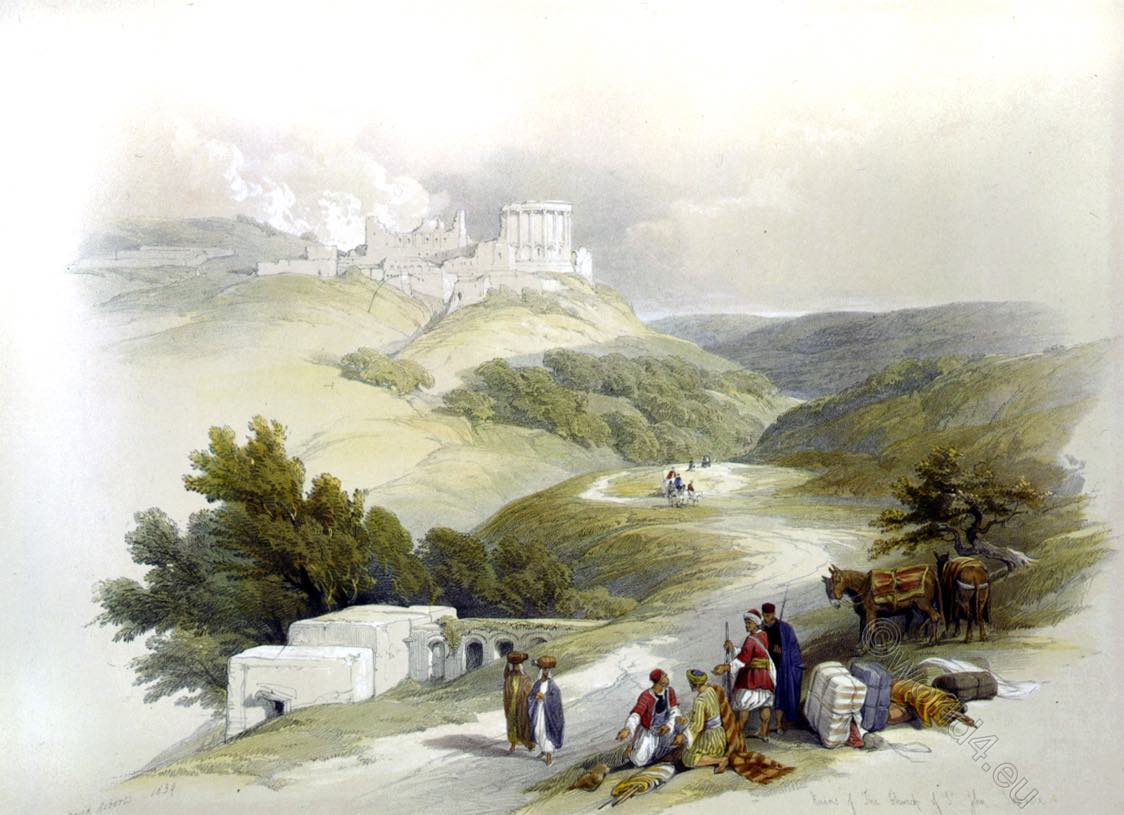
RUINS OF THE CHURCH OF SAINT JOHN, SEBASTE
by David Roberts.
Ox approaching from the West the ruins of the ancient City of Samaria, now the village of Sebaste, the most conspicuous object is formed by the ruins of the Church of Saint John the Baptist, which overhang the steep declivity below the village of Sebaste. This Church was built on the spot where tradition holds, that this “more than prophet,” the herald of our Lord, was imprisoned, martyred, and buried. 1)
The alcove for the Altar, occupying the greater part of the eastern end, which thus assumes a rounded form, is an imposing piece of mixed architecture, the Greek style predominating; the arches of the windows are round; and the whole alcove is highly ornamented, especially on the outside. But the upper arches on the inside of the alcove are pointed, as are also the great arches in the body of the Church. The latter rest on columns of no defined order; the capitals, though Corinthian in shape and size, being decorated with resemblances to the trunk of the palm-tree.
The walls are still entire to a considerable height, and the length of the Church is one hundred and fifty feet (besides a porch of ten feet), the width seventy-five feet the windows are high up and narrow, with the pointed arches and zig-zag ornaments peculiar to the early Norman, and blocks carved with grotesque heads and figures. It seems to have been, at one period, fitted for military defense.
The general architecture precludes the supposition that it is older than the time of the Crusades, though its substructure and its eastern end might have had an earlier date. 3) Popular tradition attributes this, as it does so many other Christian Churches in Palestine, to the Empress Helena; it is much more probable that it was erected by the Knights of St. John, whose numerous crosses mark their reverence for the patron saint of their celebrated order. In the midst now stands the tomb of a Sheikh!
1) According to Josephus, the Baptist was beheaded in the Castle of Machaerus, on the east of the Dead Sea, near which, it may be presumed, that he was buried. Antiq. xviii. 5. 2. 2) Roberts’s Journal. 3) Biblical Researches, iii. 141.
Source: The Holy Land, Syria, Idumea, Arabia, Egypt, & Nubia, by David Roberts, George Croly, William Brockedon. London: Lithographed, printed and published by Day & Son, lithographers to the Queen. Cate Street, Lincoln’s Inn Fields, 1855.
Continuing

